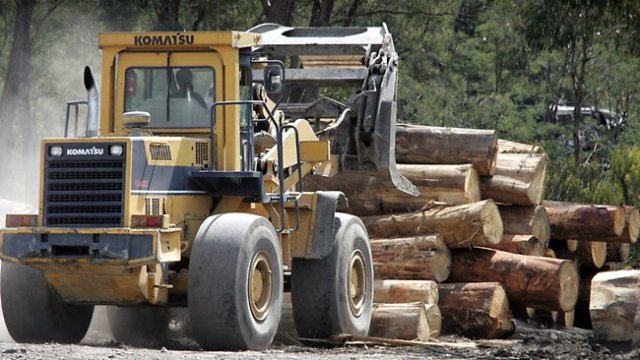
Some environmentalists have justified their support for the forest peace deal — passed by Tasmania’s Legislative Assembly on November 23 — on the grounds of not letting “perfect” become the “enemy of good”.
But a closer look at the details of the deal, which will allow the logging of native forests for another generation, makes clear it cannot even be called “good”.
As a signatory to the deal, the Wilderness Society told supporters: “The agreement was reached via genuine negotiation. By definition, that means we didn’t get everything we wanted — nor did the timber industry or the unions.
“Together, we had to put aside years of mistrust and conflict to agree that our interests are intertwined, and that both sides need each other for the forests to be protected and for the industry to have a future.”
One of the compromises is a cut to the forest area protected. An independent report prepared for the state government in March recommended at least 544,000 hectares of high conservation value forest be protected, and a further 28,000 hectares be further investigated for protection status. The report also said Forestry Tasmania was harvesting native forests at double the sustainable yield.
The forest deal scales down the amount to 504,012 hectares, but still includes forests that environmentalists have sought to protect for years.
GetUp welcomed the deal on November 23, saying: “Verified by scientists as the most important of Tasmania’s remaining native forests, the protected areas would include the iconic forests of the Styx Valley, Upper Florentine and Weld Valleys, the temperate rainforests of the Tarkine and the unique forests of the Blue Tier.”
But this figure is misleading. The deal puts aside only 395,000 hectares for immediate protection.
This deal abandons plans for a transition out of native forest logging, but instead supports “ongoing native forest logging until at least 2027”.
The deal also includes support for the “short term opening of export woodchip facilities” and the re-opening of the Triabunna woodchip mill.
Grassroots environment groups Still Wild Still Threatened (SWST) and the Huon Valley Environment Centre (HVEC) have criticised the deal.
The groups said the deal lacked specific timeframes to end logging, had abandoned a transition out of native forest logging and guaranteed the continued supply of high-conservation value forests to multinational logging company Ta Ann.
The Wilderness Society said the 504,000 hectares would be “immediately” protected. But the grassroots groups said: “There is no indication of how long it will take for the [forest] Protection Order[s] to be delivered. In the meantime logging will continue.”
The forest industry has a long-held goal to end direct action protests in the forests, and they may now get their wish. The deal includes a clause that asks groups to not raise criticisms publicly.
Under the deal, the first 395,000 hectares of forest will be protected in June nest year. The protection of the rest of the forest will depend on a “durability” test, part of which rests on public support for the agreement.
This suggests that groups who did not take part in the forest deal could find themselves under pressure to stop protests in case it could be construed as undermining the agreement.
SWST and HVEC said: “The remaining areas that have been agreed for protection will be held to ransom, pending [the] silencing [of] the rights of people to participate in a democracy, and remaining areas will be logged over ten years and then possibly protected.”
On December 11, forest campaigner Miranda Gibson will mark one year since she began her tree-sit protest. She has vowed to remain there until Tasmania’s forests have been protected. After reading the forest deal she said has decided she cannot come down yet.
With all of these important unresolved issues, the forest conflict cannot possibly be over, nor should it be.
Ordinary people on both sides of the conflict have a common interest in a sustainable industry and long-term jobs that will allow small towns to thrive. The Wilderness Society was rightly concerned that these workers be guaranteed a just transition out of native forest logging.
But the interests of people who understand that forests need protection for the sake of our climate, wildlife and biodiversity are completely at odds with those of the corporations that profit out of destroying forests, such as Gunns and Ta Ann.
These corporations are not interested in genuine negotiation or compromise. They have no loyalty to their workers, who they sack when their profits take a downturn. They will continue to act in their own self-interest, seeking to entrench their power in Tasmania and influence politicians to give them favourable deals.
The “forest peace talks” began because the forest industry recognised it was in crisis and needed a way out. With their products no longer competitive on overseas markets, and more people boycotting timber sourced from native forests, timber mills began closing.
Now, if they can give an appearance of reform, with approval from the big environment groups, they hope to secure their profits for decades, while continuing the contentious practices that caused the conflict in the first place.